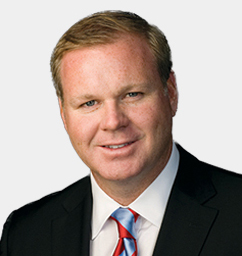If open architecture is important, target-date funds should be open
Today, defined contribution (DC) plan-level best practices call for an open-architecture, or multimanager, lineup of investment offerings, but that line of thinking rarely extends to target-date fund construction, which potentially increases participants' exposure to manager concentration and other unintended risks.

Many larger plan sponsors have already moved to reduce these risks by complementing or replacing single-manager target-date funds with multimanager target-date funds. Other sponsors, particularly among the midsize and smaller plan segments, may still have work to do. With fiduciary standards and legal proceedings on the rise, it's time that retirement's most important investment option caught up with the best practices of plan design. Some 36% of closed-architecture target-date fund providers acknowledge that integrating nonaffiliated asset managers into their offerings is either under consideration or likely.1 A strengthening undercurrent of demand is clearly prompting many proprietary players to step back and reconsider their existing target-date fund business strategies.

Serving the best interests of plan participants appears to be the ultimate driver behind these business decisions. According to 75% of the firms offering open-architecture target-date funds, “Participants benefit from asset manager diversification”; the second and third most commonly cited reasons given for outsourcing portions of investment management included limited in-house capabilities in certain asset classes (25%) and the U.S. Department of Labor's (DOL's) encouragement for plan sponsors to consider open-architecture target-date products (17%).1
The DOL's nod to multimanager target-date funds strengthened their standing
The DOL has indeed suggested that plan sponsors would be wise to consider open-architecture target-date funds. In 2013, the DOL issued guidance to plan fiduciaries choosing among target-date strategies in an Employee Benefits Security Administration memorandum, which highlighted the benefits of portfolios populated with multiple managers, “thus diversifying participants' exposure to one investment provider.”2 This explicit acknowledgment prompted the broader industry to take notice, advancing the stature of multimanager models.
If a well-built target-date fund is more than the sum of its parts, then one of the best features of an open-architecture structure is the potential to incorporate top-notch investment talent from anywhere around the globe. When carefully combined, managers from different firms who view the world differently can generate complementary patterns of return that increase a portfolio's resilience and provide a broader range of potential sources of return.
If open architecture is important, then more target-date funds should be open, incorporating a variety of specialized teams based on their merits rather than their firm affiliations. For years, the ability to invest with multiple managers has been available to DC plan participants who do their own asset allocation by drawing on a range of individual investment options. Whether it's by choice or default, don't participants delegating the asset allocation decision to professionals deserve the same?
Forward-thinking fiduciaries have already taken action toward nonrecordkeeper target-date funds
Plan advisors, consultants, and sponsors at the helm of the country's largest DC plans have responded to the shortcomings of single-manager asset allocation offerings by abandoning their recordkeepers' proprietary target-date funds. Nearly two-thirds (64%) of sponsors overseeing plans with more than $1 billion in assets now use nonrecordkeeper target-date funds.3
Moreover, 62% of plan sponsors agree that it's “a good idea to separate asset management … from recordkeeping,” even if they have not yet implemented this idea in their target-date funds.3However, in terms of wholesale shifts already completed, the megaplan portion of the DC market stands alone; across all smaller plan segments, recordkeepers' target-date funds still represent the majority.
Today, multiple managers can be found in select target-date fund offerings, just as multiple managers are commonly found across DC plan investment menus. If fiduciaries are still required to act solely in the best interest of the plan participants, then the time for plan sponsors to embrace open-architecture target-date funds is now.
Editor's note: This material was adapted from a new white paper, which can be downloaded and read in full, free of charge, by registering here.
1 The Cerulli Edge, August 2016.
2 “Target Date Retirement Funds-Tips for ERISA Plan Fiduciaries,” U.S. Department of Labor, February 2013.
3 “As plan sponsors realize a redesign is needed, target date funds get a second look,” SEI, July 2016.
Important disclosures
This commentary is provided for informational purposes only and is not an endorsement of any security, mutual fund, sector, or index. The information contained herein is based on sources believed to be reliable, but it is neither all inclusive nor guaranteed by John Hancock Investment Management. This material does not constitute tax, legal, or accounting advice, and neither John Hancock nor any of its agents, employees, or registered representatives are in the business of offering such advice. It was not intended or written for use, and cannot be used, by any taxpayer for the purpose of avoiding any IRS penalty. It was written to support the marketing of the transactions or topics it addresses. Anyone interested in these transactions or topics should seek advice from independent professional advisors based on his or her particular circumstances. Diversification does not guarantee a profit or eliminate the risk of a loss.
MF354518






